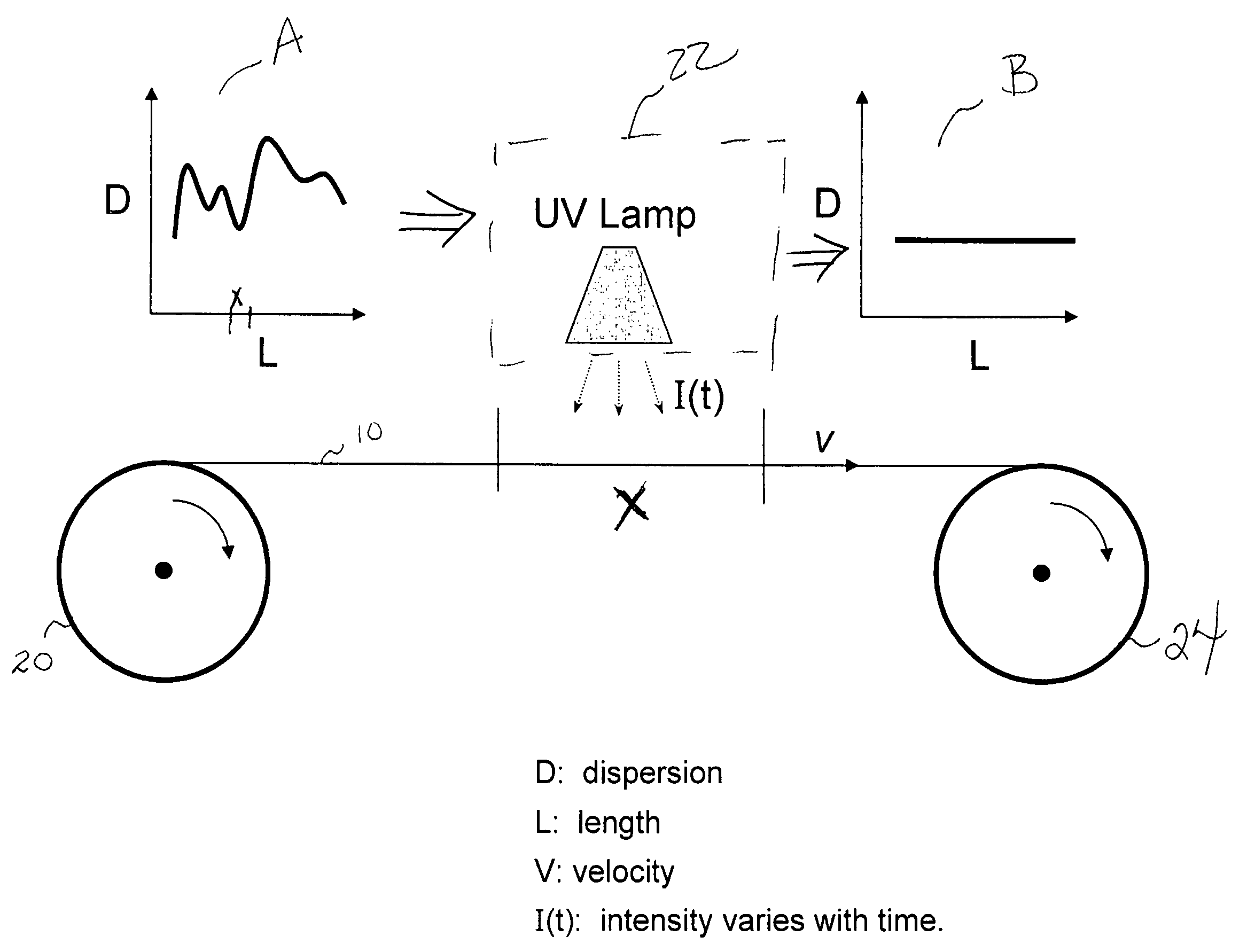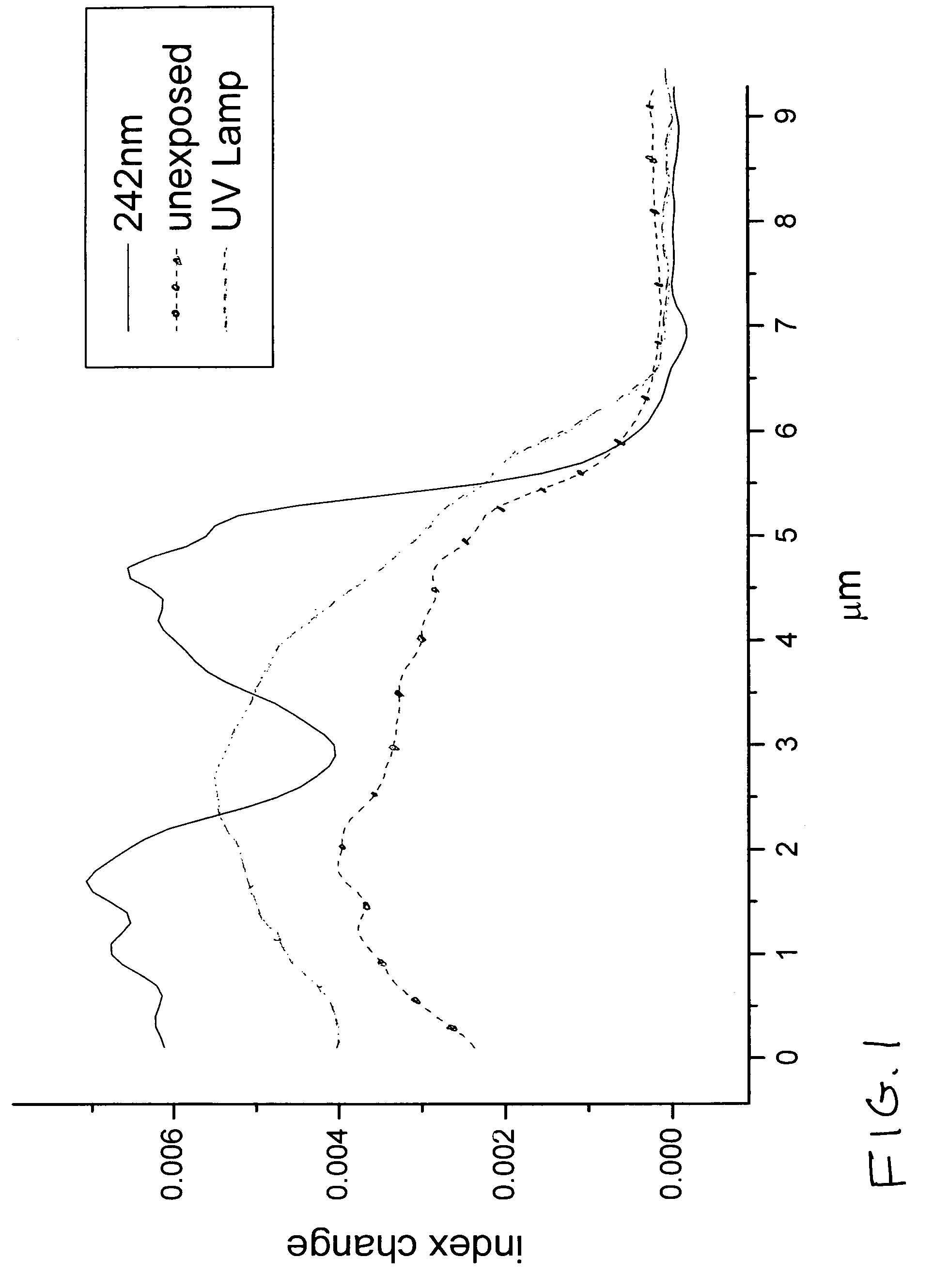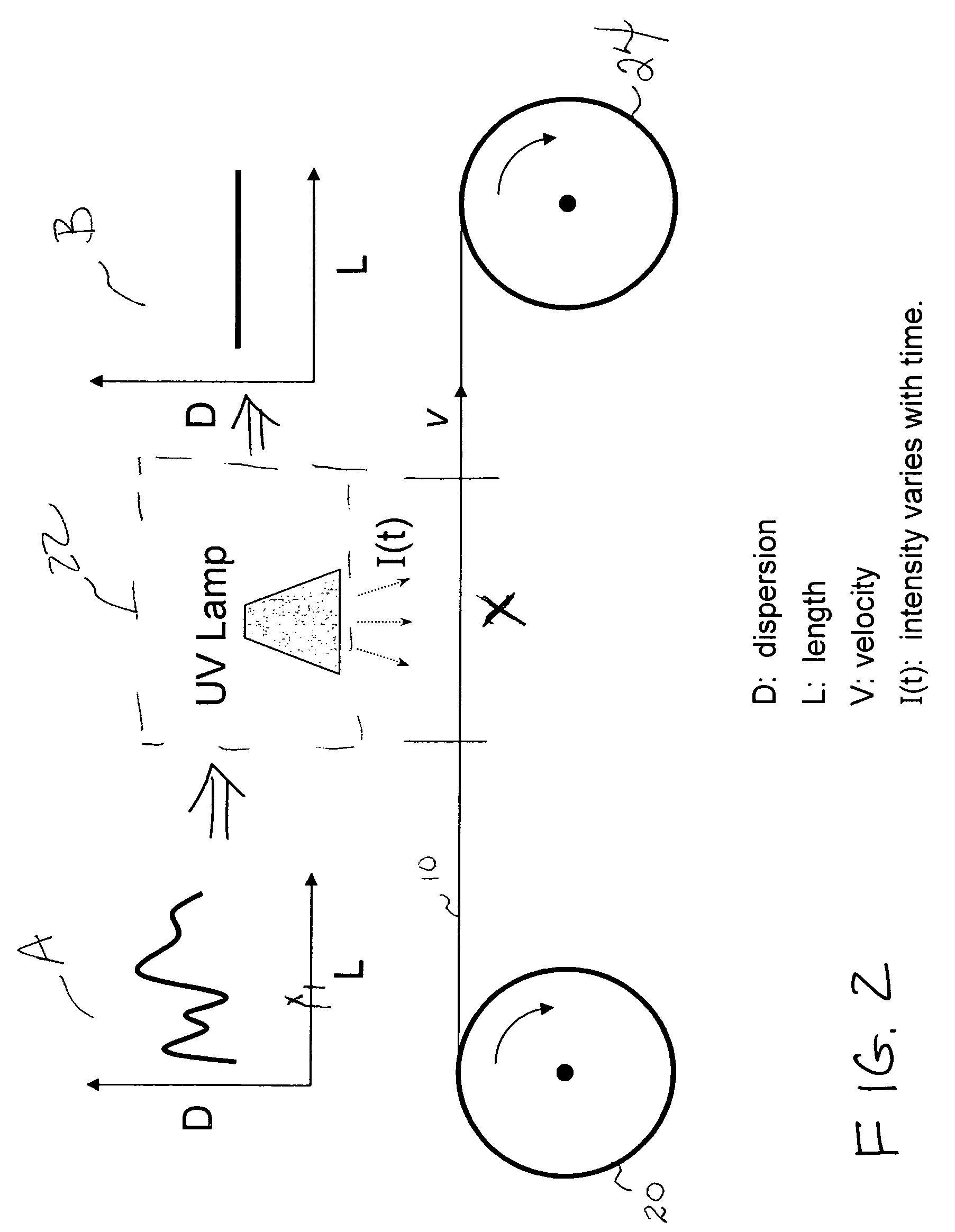Method of controlling longitudinal properties of optical fiber
a technology of optical fiber and longitudinal properties, which is applied in the field of fabricating optical fiber, can solve the problems of limited the capabilities of these fibers, significant length-dependent variation in one or more of these characteristics, and inability to meet the requirements of the application of the fiber, so as to achieve the effect of restoring fiber strength, simplifying the inventive process of exposing the optical fiber, and maintaining strength
- Summary
- Abstract
- Description
- Claims
- Application Information
AI Technical Summary
Benefits of technology
Problems solved by technology
Method used
Image
Examples
Embodiment Construction
[0025]Previously, techniques such as UV exposure have been used to modify the refractive index of short sections of optical fiber. The ability to “write” gratings into optical fibers with UV radiation has been standard practice (see, for example, U.S. Pat. No. 5,773,486 for a complete description of one exemplary UV-writing process). Recently, UV radiation has been utilized with highly-nonlinear fiber (HNLF) to create four-wave mixing (FWM) or extend continuum generation to provide a supercontinuum source. In the latter case, a UV exposure on the order of 2.5 kJ / cm2 was applied to a deuterium-loaded HNLF to create an index change of 0.005, causing a shift in the zero dispersion wavelength (ZDW) of almost 100 nm.
[0026]In contrast, the length-dependent modifications in optical characteristics performed by the present invention require UV radiation levels which are orders of magnitude less than those required for these prior art applications. Profiles of grating growth in HNLF have sho...
PUM
| Property | Measurement | Unit |
|---|---|---|
| wavelengths | aaaaa | aaaaa |
| wavelengths | aaaaa | aaaaa |
| wavelengths | aaaaa | aaaaa |
Abstract
Description
Claims
Application Information
 Login to View More
Login to View More - R&D
- Intellectual Property
- Life Sciences
- Materials
- Tech Scout
- Unparalleled Data Quality
- Higher Quality Content
- 60% Fewer Hallucinations
Browse by: Latest US Patents, China's latest patents, Technical Efficacy Thesaurus, Application Domain, Technology Topic, Popular Technical Reports.
© 2025 PatSnap. All rights reserved.Legal|Privacy policy|Modern Slavery Act Transparency Statement|Sitemap|About US| Contact US: help@patsnap.com



